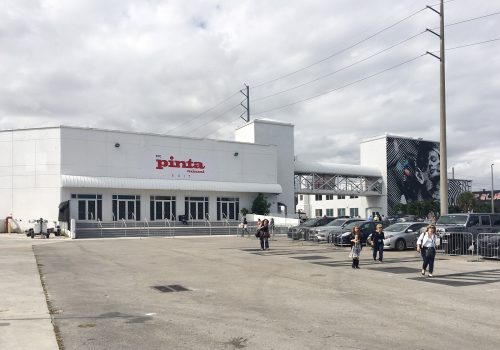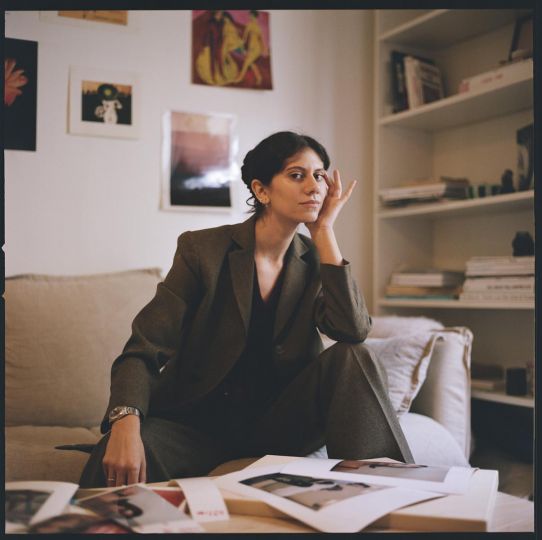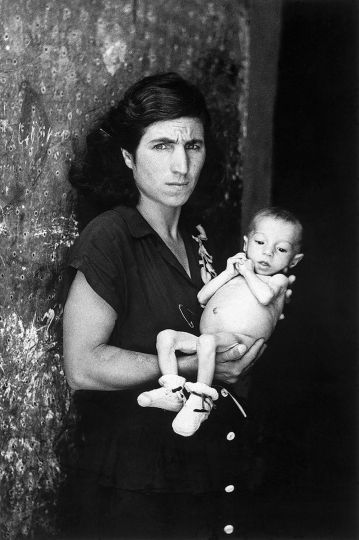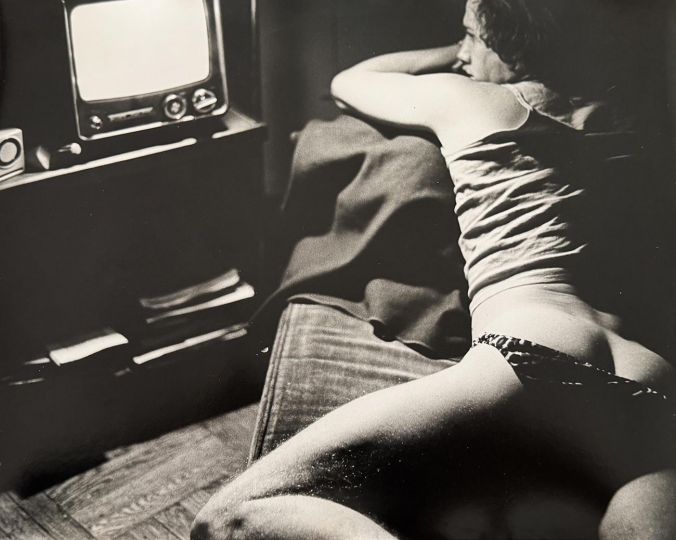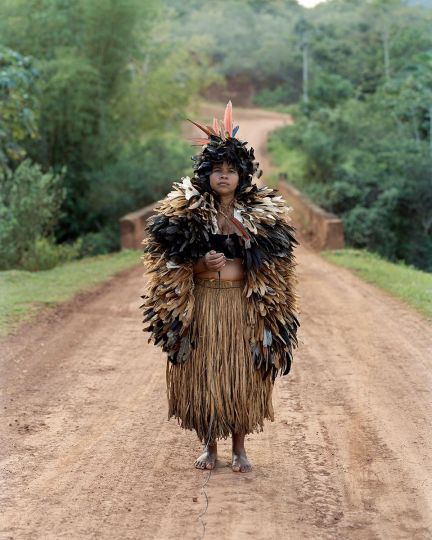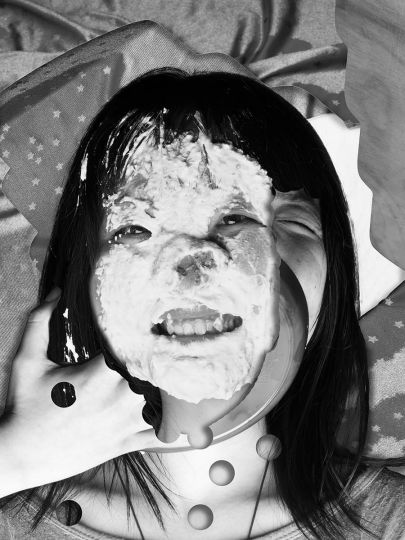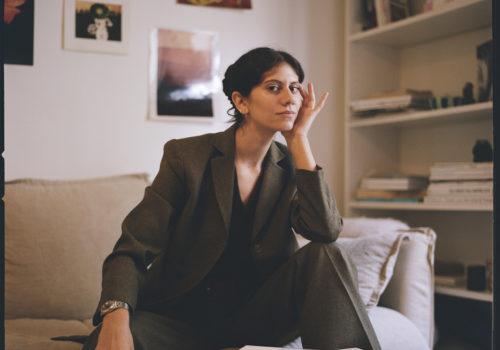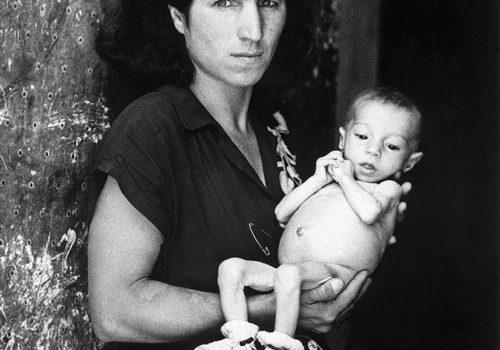Saturday, December 8th
Living in Miami means having easy access to many things Latin American which I love. After having my morning cortado and cheese arepa, I was fueled and ready to go to Pinta at Mana Wynwood. Pinta, a Latin American art fair with a global perspective, was one of the memorable fairs I saw last year. And with tastefully selected and curated works for their 12thEdition, “Crossing Cultures”, it definitely did not disappoint.
What first caught my eye was Cuban artist, Francisco Masó’s studio self-portraits at Archival Art Studio. From far away, they looked like beautifully choreographed dance positions. But upon further inspection, these portraits were actually body movement studies from those who were resisting in Cuba. Francisco took the role of the repressed with his graceful body positions placing light onto those who are struggling. Image 75, 76, 77
Across from Masó’s work was Leonor Caraballo’s work. Born in Argentina and having lived in New York and Brazil, her installation was different from the others because her photos were not displayed to be sold but to give homage to her, her work and legacy after having passed from breast cancer in 2015.
On my left was her public bathroom series that was a part of her school thesis at RISD. In front of me was a collection of portraits of transvestites she took when she was living in Sao Paolo. She had befriended the community while living there, and you could feel the mutual trust and connection between the sitter and the artist in the portraits. On my right was a series of sofa portraits where she invited people into her living quarters to have their portraits taken on her sofa. She had collaborated with her husband, Abou Farman, on several works which ended up in the Tate Modern, The Whitney and PS1/MOMA.
What was also remarkable about Leonor was that she had transformed the way doctors see breast cancer tumors by taking 2D, MRI images and realizing them into 3D objects through a 3D printer. Caraballo-farman’s Object Breast Cancer project was used to advance medical knowledge by actualizing their tumors into 3D, enabling all the details of the intricate tumor to be viewed. Caraballo also helped create the movie Icaros: a visionwhich was “a story of fear and the release of fear”. Image 78, 79, 80
I next bumped into Yaeli Pressner in front of the eye-catching installation from the Foundation for the Totality, a Latin American vanguard group founded by Rolando Peña in the 1960’s. Peña a very important Venezuelan artist is also known as the Black Prince, a name Andy Warhol had given him. Artists in this collaborative group included designers, architects, photographers, playwrights and intellectuals. In 1967, Rolando had acted in several of Andy Warhol’s films through the Foundation for the Totality. Here is a photo of both of them together and another one of Warhol on set taken by photographer Marcelo Montealegre. Image 81, 82, 83
Next, I saw the great Anna Bella Geiger’s Native Brazil Alien Brazil,1977 at the Murilo Castro Gallery. Annais an 85 year-old Brazilian, multi-media artist who is from the 1950’s Brazilian avant-garde tradition of abstract art. She also is a professor in Belgium and New York. Her work covers political, social and cultural oppression in Brazil and elsewhere. In this work Geiger mirrors the poses of those indigenous people found in postcards questioning the uncomfortable usage of the terms “native” and “alien”. It addresses the division within Brazilian identity where political polarization still exists in multi-cultural or multi-ethnic society today. Image 84, 85
On my way out, I ran into Fernanda López’ memorable installation involving textile, shoes and documentary photographs of her performance. Fernanda, a young artist from Chile, explores how the body engages and transforms through clothing. Her work departs from a feminist standpoint where you are able to feel the constraint from cultural norms through the intensity she creates with her performances that involve clothing and her body. Here are images with some of her photos documenting her movements. And here’s one with me with Fernanda who happened to be there. The only thing I forgot in this shot was to open my jacket and give a “shout out” to the Lotus House with their pink t-shirt. Image 86, 87,88
For the evening, I was very much looking forward to attending a panel discussion at the Miami Beach Convention Center called “Diversifying Collections – Indigenous Art”. Being in North America, it made perfect sense to learn more about contemporary artists indigenous to this continent and also learn about how their work was being recognized publicly and within collections. On the panel was Jeffrey Gibson, a New York based artist, John Lukavic, Curator of Native Arts at the Denver Art Museum, and Wanda Nanibush, Curator of the Art Gallery of Ontario, Toronto. It was beautifully moderated by Jami Powell, Associate Curator of Native American Art at the Hood Museum of Art in Dartmouth College.
The conversation was so informative and much needed that it could have gone on throughout the night. There were so many excellent points made from the panelists and moderator. And John’s commentary on diversifying collections really struck a chord.
John:We talk about diversifying the work force and the staff in the museums, but we also have to diversify the collections. Collectively, people need to go into an institution and see themselves represented and respected whether they are Latinx, African or Black American, Asian American, American Indian, etc. They should experience this and know that they are accepted and welcomed. Some museums may want to diversify their audience, but if certain practices aren’t changed where only old, white, dead artists are exhibited, how is that truly serving the audience? How are you providing something to the overall audience to make them feel welcomed, respected and honored to be there? Diversifying your collection is one of the ways to do this.
Here is a shot with the talented Jeffrey Gibson and another image of his recent piece, Your Eyes Hypnotize Me, 2018 at Sikkema Jenkins & Co’s. I was hypnotized by his stunning piece which included glass beads, copper and tin jingles, and steel and brass studs. Image 89, 90, 91
The night ended, but I was fired up! The conversation made me critique my own actions, decisions and choices. Were they consciously being made to help move the progress needle? I was reminded of the differences we all can collectively make shaping a more inclusive and accurately represented community. Now, off to bed!
CYJO
Instagram: @cyjostudio

